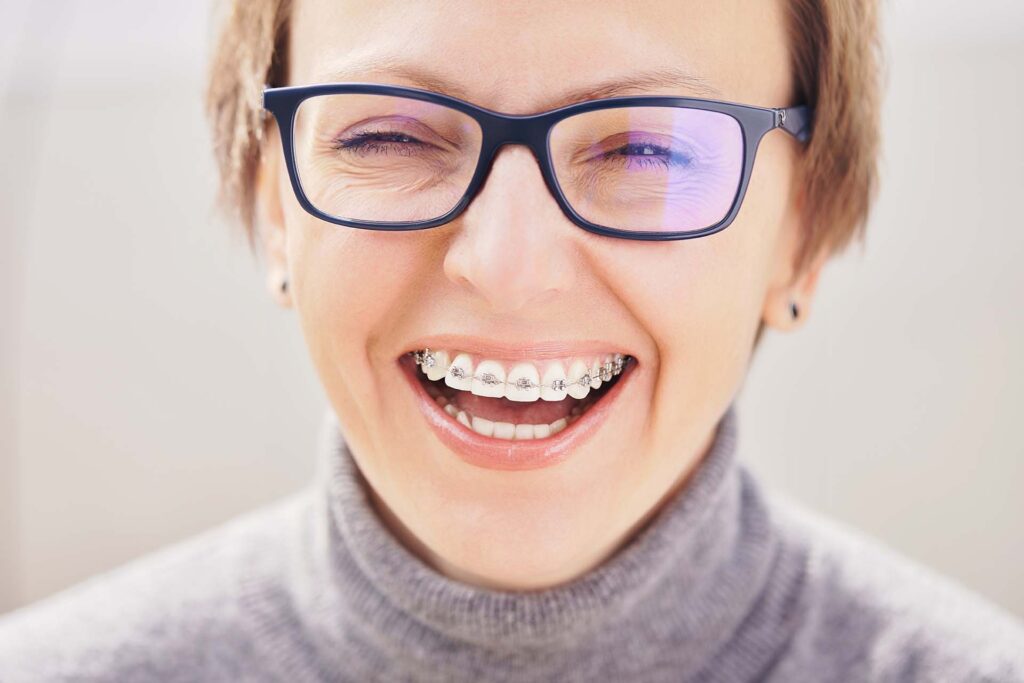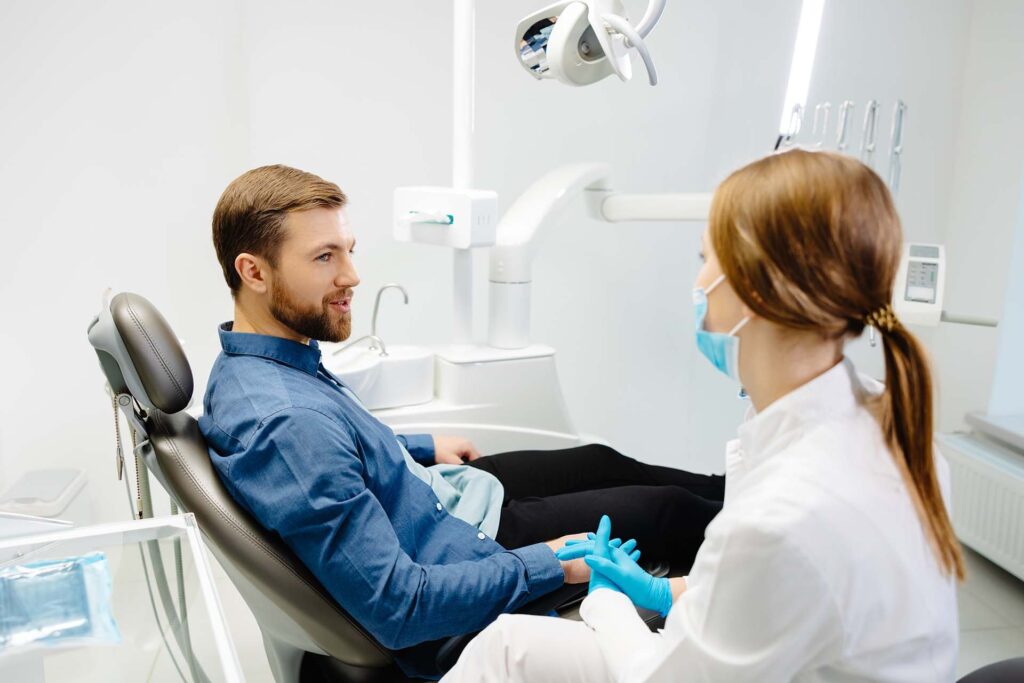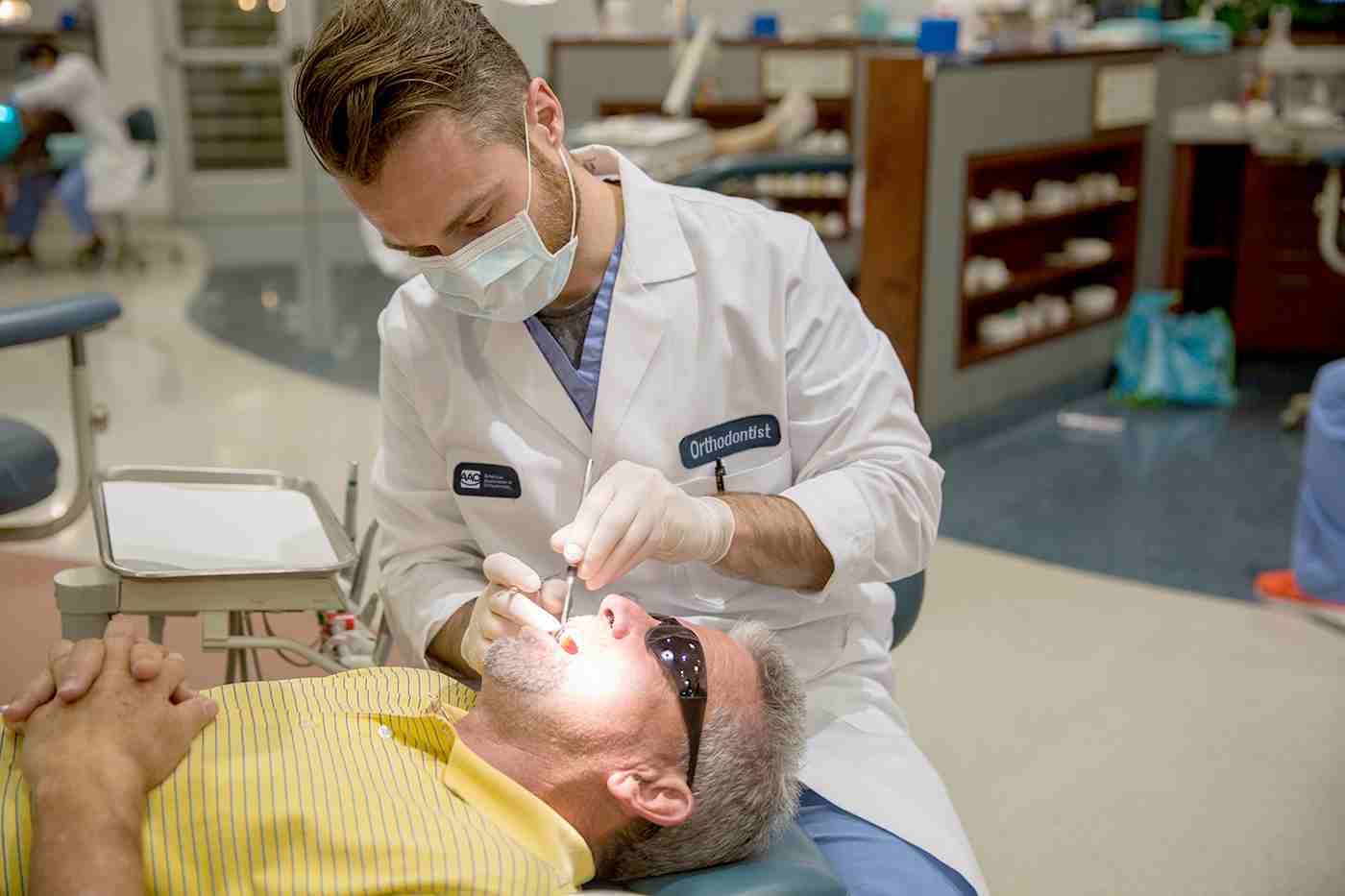Adult Orthodontics: Embrace Your Smile at Any Age
Have you ever noticed that there seem to be more adults getting orthodontic treatment, whether it be with clear aligners or braces? You’re not alone. In fact, 1 in 3 orthodontic patients today are adults.
Orthodontic treatment is not just for improved cosmetics. Misaligned teeth can cause many dental issues, from excessive wear to gum disease and even challenges in everyday tasks like chewing.
It’s never too late to have a beautiful and healthy smile. Whether boosting your confidence with straighter teeth or addressing a dental concern, adult orthodontic treatments may be for you. Adult orthodontics ensures both aesthetic and functional improvements and provides confidence that lasts a lifetime.

A Complete Guide to Adult Orthodontics
Being older does not prevent you from getting orthodontic treatment. Our teeth can naturally shift as we age, and that can be detrimental to our oral health and affect our confidence. Whether your motivation is cosmetic or health-driven, remember; that it’s never too late to reinvent your smile.
You deserve the self-confidence that comes with a radiant smile and the associated health benefits of properly aligned teeth and bite. Modern advances in orthodontic technologies make it easier than ever to improve your smile. Today’s esthetic treatment options are better suited to adult lifestyles.
From cosmetic braces to clear aligners, adult patients have more options than ever before.
Breaking Free from Social Stigmas of Adult Orthodontics
There’s a prevailing myth that braces and orthodontic treatments are exclusively for teenagers. However, seeking orthodontic treatment as an adult isn’t about vanity but health, confidence, and overall well-being. The value and benefits of adult orthodontic treatment continue to become better understood and accepted.

Why You May Need Orthodontic Treatment
Orthodontic treatment can fix many teeth and jaw alignment issues. Even as an adult, you may benefit from treatment if you are experiencing any of the following orthodontic problems:
Overcrowding
Overcrowding occurs when the jaw has insufficient space to accommodate all adult teeth, which can lead to misaligned, crooked, or overlapping teeth. This orthodontic issue is not exclusive to children; it can also be a concern for adults who may not have corrected the problem early on. Overcrowded teeth can make it challenging to maintain proper oral hygiene, cause difficulties with chewing and speaking, and impact an individual’s self-esteem or confidence. For adults, correcting overcrowding often involves orthodontic treatments such as braces or clear aligners.
Overbite
An overbite, also known as a deep bite, is a common orthodontic problem that occurs when the upper teeth significantly overlap the lower front teeth while the mouth is closed. This can be a result of genetics, the overdevelopment of the bone that supports the teeth, oral habits (like thumb sucking during childhood), or the loss of lower teeth, leading to an imbalance in the bite. Even in adulthood, treating an overbite is essential, as it can lead to excessive wear on the lower teeth and in severe cases, may require restorative dental work. Braces, clear aligners, and occasionally orthognathic surgery are used to correct overbites in adults.
Underbite
An underbite is a dental condition where the lower teeth protrude beyond the upper front teeth. This misalignment is less common but can pose significant challenges to oral health, aesthetics, and functionality. Correcting an underbite is essential for adults, as moving the teeth and jaws into their ideal positions can enhance chewing and speaking, alleviate jaw pain, and reduce the risk of tooth wear. Braces and clear aligners are commonly used to correct adult underbites.
Open Bite
Open bites, characterized by a gap between the upper and lower teeth when the jaws are closed, can impair chewing and speech and cause aesthetic concerns. Orthodontists use a variety of approaches to correct open bites in adults, depending on the severity and underlying cause. Traditional braces are commonly used to gradually move teeth into alignment, closing the open bite over time, while clear aligners can offer a less noticeable treatment option for mild to moderate open bites. Adults who seek orthodontic treatment for open bites see immediate results that ensure optimal function, improved oral health, and enhanced aesthetics.
Jaw Pain
Orthodontic treatment can significantly reduce jaw pain in adults, especially when associated with the eruption or presence of wisdom teeth. Wisdom teeth, or third molars, often emerge during late adolescence or early adulthood and can cause crowding, misalignment, and notable jaw pain. Orthodontic treatment can alleviate this pain through careful assessment and strategic planning, using braces or aligners to correct any misalignment caused by wisdom teeth and reduce stress on the jaw joints. In some cases, the removal of wisdom teeth may be recommended to prevent further misalignment.
Tooth Wear or Decay
Misaligned teeth can create uneven pressure during chewing, leading to abnormal wear patterns on the enamel. This uneven wear can make teeth more susceptible to decay, as protective enamel is worn away, exposing dentin and creating crevices where bacteria can thrive. Additionally, crooked or overcrowded teeth are harder to clean, increasing the risk of plaque buildup, tooth decay, and gum disease. Orthodontic treatments such as braces or clear aligners can correct these issues, distributing bite pressure more evenly and making teeth easier to clean. By bringing teeth into proper alignment, orthodontics enhances the appearance of the smile while reducing the risk of premature tooth wear and decay, contributing to a healthier mouth and longer-lasting teeth.
Gum Disease
Gum disease, also known as periodontal disease, is a serious condition that affects the gums and the supporting structures of the teeth. It begins as gingivitis, characterized by redness, swelling, and bleeding of the gums, and can progress to periodontitis, where the gums pull away from the teeth and form pockets that become infected. Orthodontic treatment can correct misaligned or overcrowded teeth, which are more difficult to clean and more susceptible to plaque accumulation—a primary cause of gum disease. Properly aligned teeth allow for more effective brushing and flossing, reducing plaque buildup and the risk of gum disease.
Adult Orthodontic Treatment Options
-
Braces
Composed of brackets that are affixed to teeth and wires that are threaded through slots in the brackets.
-
Aligners
Clear, thin, plastic-like trays that are formed to fit an individual’s teeth. Patients are responsible for insertion and removal.
-
Retainers
Removable, clear, thin, slightly flexible, and made of a plastic-like material. They fit the exact shape and placement of the teeth.
-
Elastics
Elastics are tiny rubber bands that apply extra force to a tooth or teeth in ways that braces alone cannot. This helps teeth move into their ideal positions.
-
Mouthguards
A mouth guard is used by athletes of all ages to protect teeth from trauma during competitive and individual sporting activities.
-
Orthodontic Surgery
Surgical orthodontics, also called orthognathic surgery, is corrective jaw surgery performed to remedy skeletal problems that affect the ability to bite, chew and speak.
Frequently Asked Questions
Browse our list of adult orthodontics FAQs. If you can’t find an answer to your question, contact us and we will supply you with an answer and any other information you may need.

Start Your Orthodontic Journey with an 48ͼ�� Orthodontist
It’s never too late to take control of your oral health and smile. We can find the right orthodontist near you and help you choose the best treatment plan for your lifestyle. The 48ͼ�� represents over 19,000 orthodontist members throughout the United States, Canada, and abroad. Search our network of orthodontic professionals and experience the life-changing benefits of orthodontic care today.


